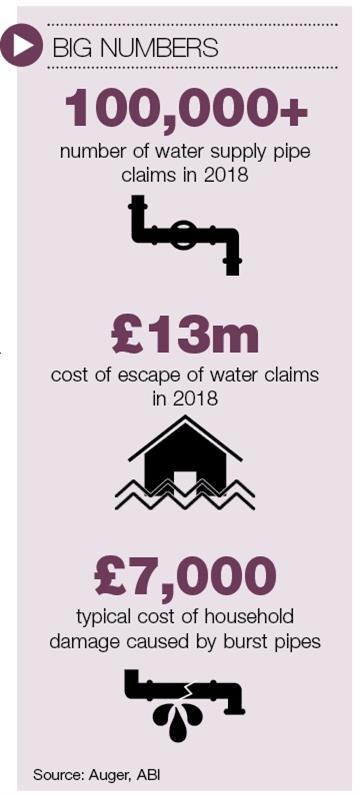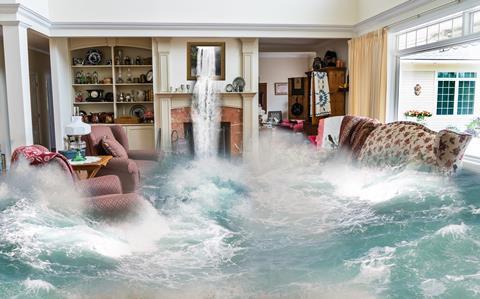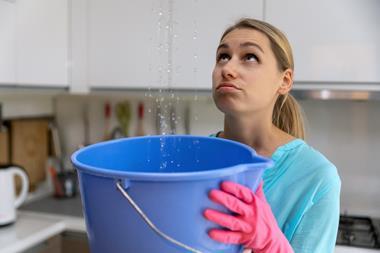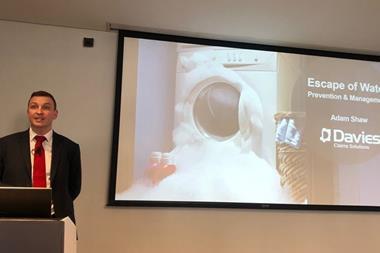Escape of water (EoW) claims have been a significant issue for the domestic property market over the past few years

In the last three years, the average cost of escape of water claims has risen by a third to an estimated £2.5m a day, according to the ABI. Adding to the loss burden in 2018 was a 290% rise in bad weather insurance claims in the first quarter, totalling £1.25bn.
For luxury properties, EoW claims costs can escalate due to the open plan nature of many modern homes and the high cost of fixtures and fittings. With private clients often owning multiple homes, the risk of a leak going undetected for a long period of time can also be much higher.
Covéa Insurance head of high net worth and operational governance Sara Simmons said: “Rather than having to repair and redecorate just one room, you now have to potentially do an entire floor of a high-end home, and the fixtures and fittings are that much more expensive.
“You might have to strip out a whole kitchen to get to a leak and high net worth homes contain a lot more water these days – most bedrooms have en suites, sometimes wet rooms, and there are more sophisticated kitchen appliances using water,” she added.
By tying products to connected home technology, some carriers are hoping to reduce their overall claims impact while offering more value to customers. Some HNW insurers are offering leak detection systems – or leakbots – in an effort to detect minor leaks before they become a big issue.
Smart home gadgetry is becoming increasingly popular with HNW clients and products such as leakbots are another way for insurers and brokers to add value, said Simmons.
“We are encouraging people to install and use leak detection devices, which do help and will detect even the very smallest of leaks before they have a chance to cause major damage.”
Next generation leak detection
A repair system for water pipes developed by tech firms Auger and Qinov8 promises to prevent unnecessary excavations and cut the cost of claims by up to 80%.
The Aquapea system uses an advanced polymer material the size of a pea, which is drawn to the leak location. Its developers say the solution typically offers 25% savings for the insurer on external water pipe claims and up to 80% on internal leaks by reducing disruption and cost of internal digs and reinstatement of kitchens and floor finishes.
Chris Cowen, Auger client relationship manager, said: “In many cases we can repair a leak within 45 minutes of arriving on site without any excavation. In 40% of cases we can achieve a complete effective repair, avoiding excavations entirely.”
- The Waterlock leak detection system, developed by Geo and inet3, uses a sensor to detect standing water, excess humidity and freezing conditions, reporting back to the customer via text or email.
- HomeServe’s LeakBot – patented and launched in 2016 – detects leaks by using clip-on temperature sensors to detect leaks anywhere on the mains water supply.
The smart connected device alerts customers via their smartphones to issues such as dripping taps, hidden leaks on pipes and taps being left running.













































No comments yet